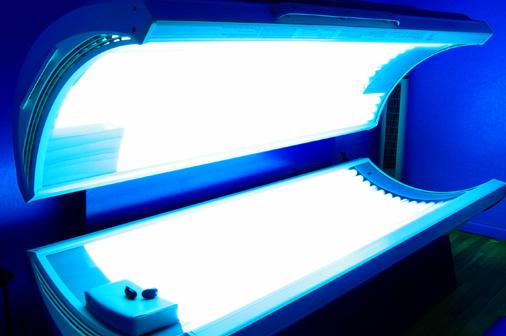
Winter is fast approaching, and with it comes colder weather (yes, even in Texas), Thanksgiving food, Starbucks holiday cups … and the dreaded return of pasty white legs.
As summer days spent lazing poolside in the sun fade further into memory, many women turn to tanning beds in an attempt to preserve that sun-kissed glow. But it is no secret that skin cancer is ever on the rise, and as women begin to depend more and more on artificial methods to maintain their tans, the question rises: what are the risks of tanning beds and how safe are they really?
Skin cancer is a topic that receives much media attention, with thousands of people diagnosed every year. Most people know about the dangers of sun exposure and take appropriate measures to protect themselves from the risks of UVA rays. But for some reason, many people consider the use of tanning beds to be less harmful because it involves the use of “artificial” sunlight.
“I guess a lot of people think since using tanning beds isn’t being outdoors, it’s ok,” junior Kayla Rascon said.
Tanning beds use both Ultraviolet A (UVA) and Ultraviolet B (UVB) rays, which cause skin cells called melanocytes to change color and take on a tanned appearance. Contrary to popular belief, the rays emitted by tanning beds are far more concentrated, and therefore more powerful, than the ones found naturally in sunlight; literally radiating skin into a tan.
Immediate symptoms of ultraviolet damage in skin include blistering, peeling, and a reddish appearance to the skin; these can be caused by prolonged time in tanning beds. Long term consequences can include wrinkles, discoloration, cataracts, a weakening of the immune system, a “leathery” appearance to the skin, and eventually, the notorious skin cancer. In addition, the close concentration of UVA and UVB rays to skin found in tanning beds can cause skin to become thinner over time, making it more difficult to heal.
Yet, despite all this, thousands of young people still consider the achievement of a deep skin-tone outweigh these dangers. Although many naturally pale people embrace their ivory color, the opinion that tan skin is more attractive is still the more popular one.
“I just feel like I look better tan,” junior Jordan Villanueva said. “I hate getting paler during the winter.”
For those who want to maintain their fashionable summer tan throughout the colder months, the much-safer alternative of spray tans is available. Spray tans work through a solution which contains DiHydroxyAcetone, or DHA, a colorless sugar that, when sprayed onto the skin, reacts with the dead amino acids in the top layer to develop a brown color. It is non-toxic, lasts between 5-10 days, and is completely non-carcinogenic. In this way, tanners can get all the benefits of an artificial tan without the health risks associated with tanning beds.
“Some of my friends have gotten spray tans before,” Rascon said. “If you do it right, it looks really good, and it definitely sounds better than wrinkles or skin cancer.”
Visit http://www.tanetcaustin.com/Austin-Spray-Tanning.html for more information.






